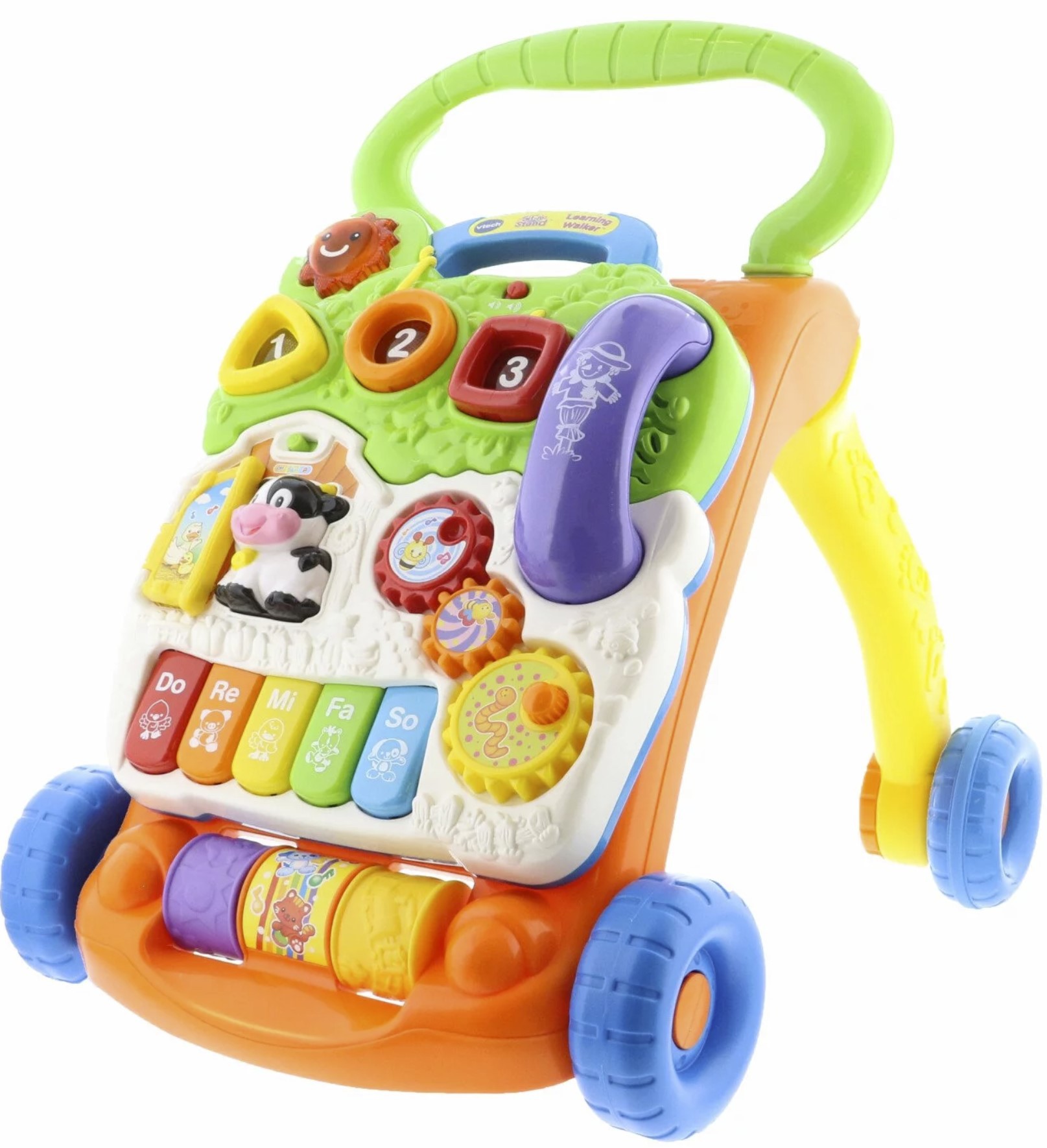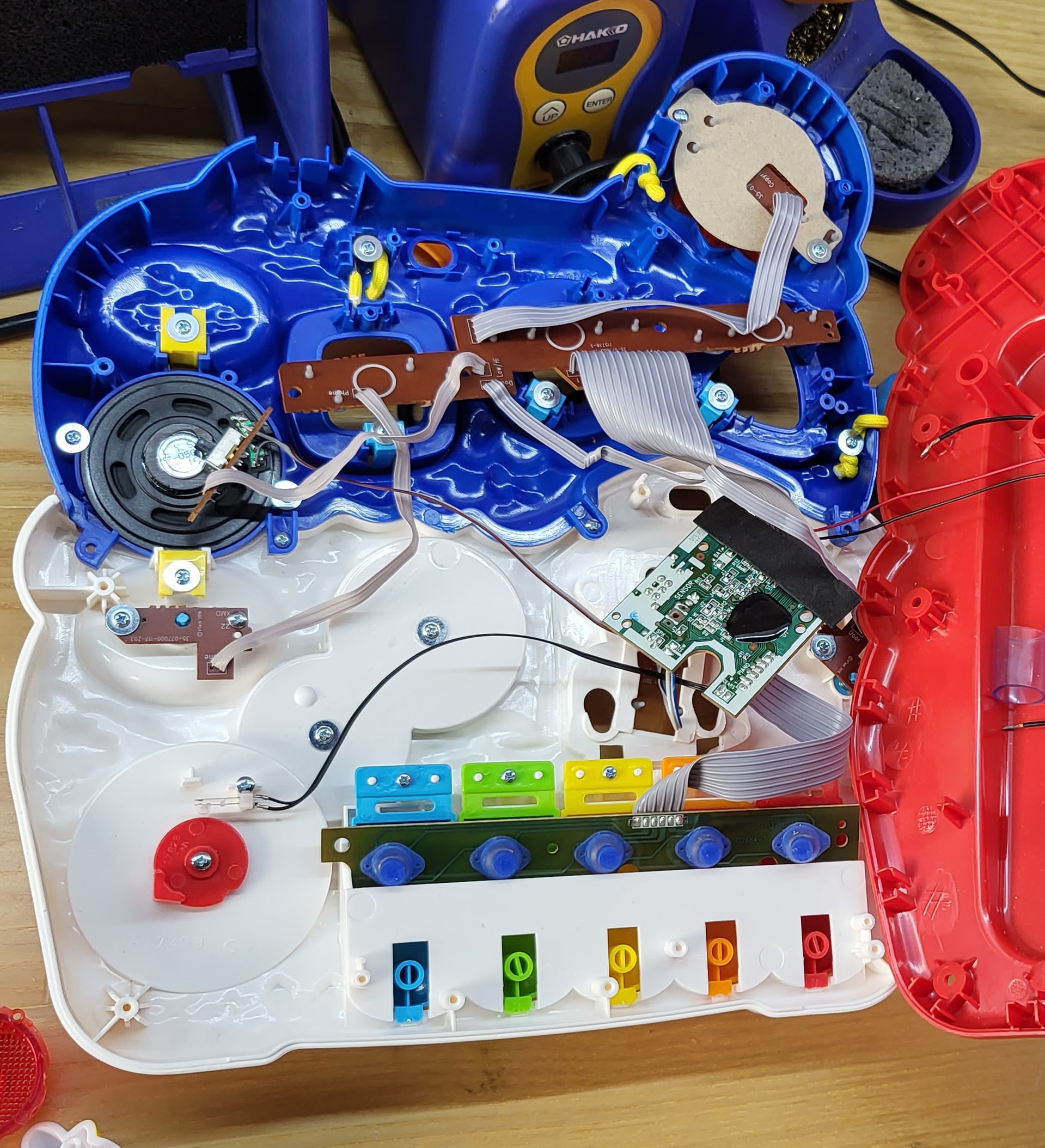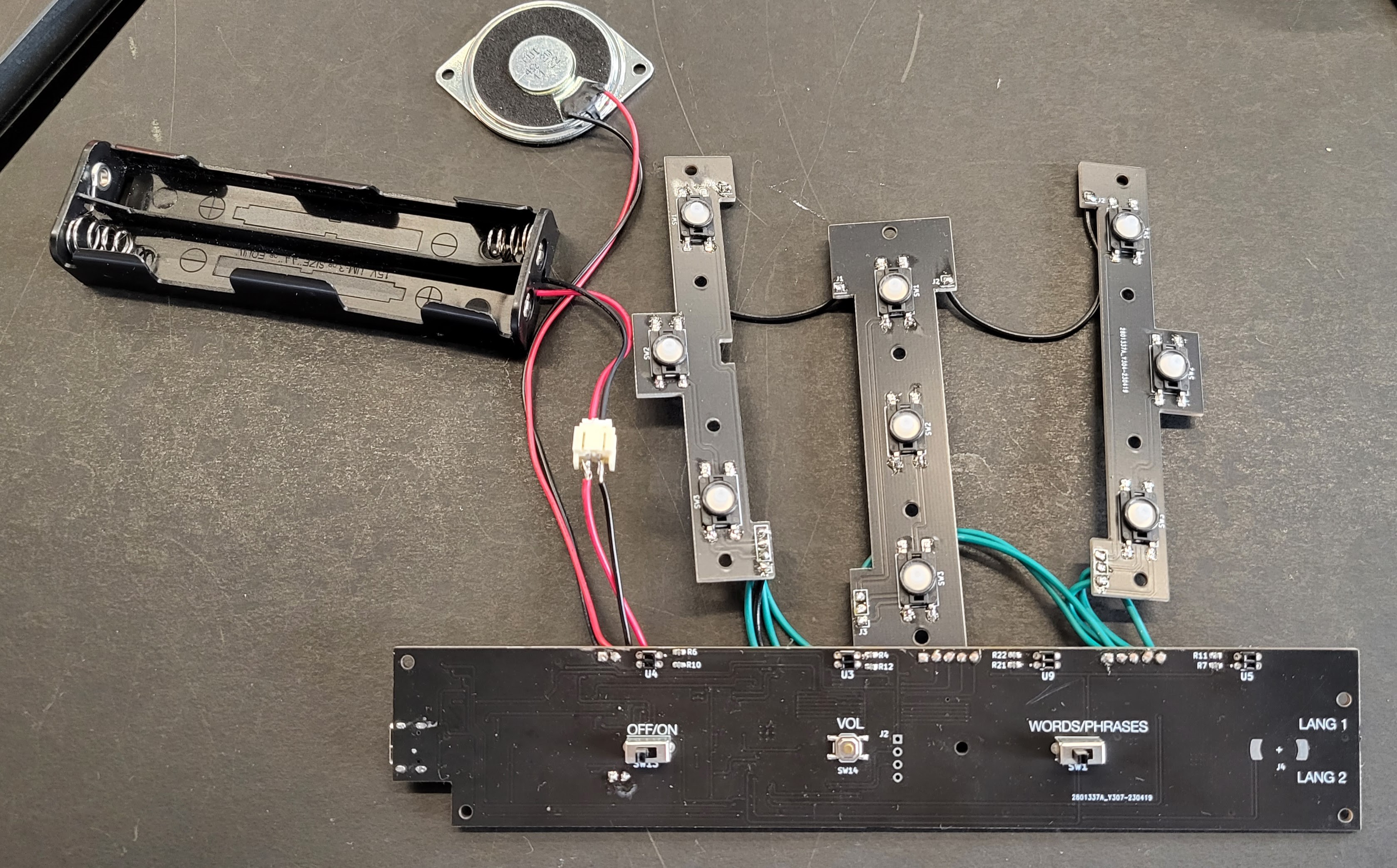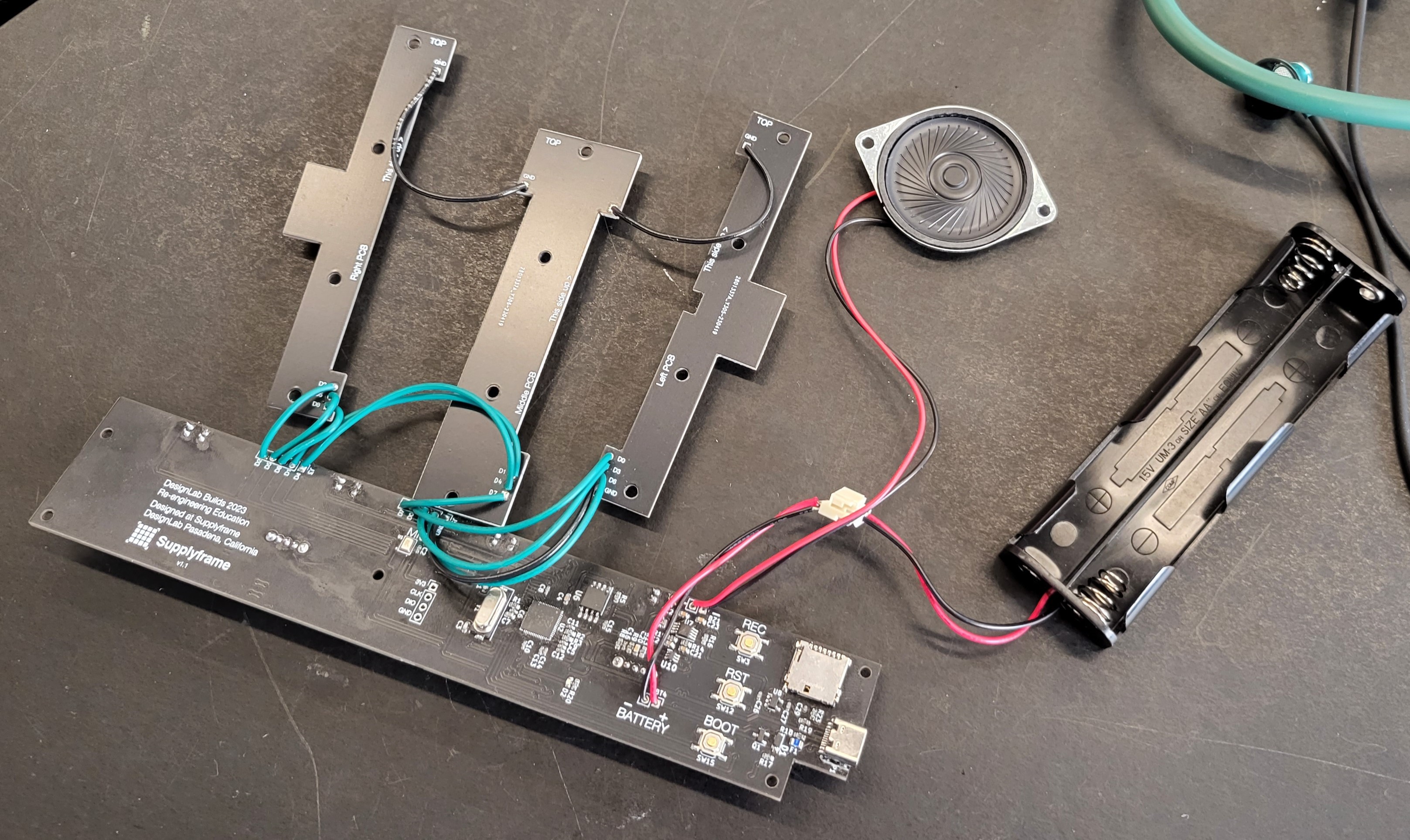The test board did a pretty good job at helping us test the concept quickly and Andres was able to continue working on the firmware. Meanwhile, I worked on the form factor and planned the product for an eventual production ramp up. The prototyping board had too much unused PCB space. And it would even make the unit heavier, too. For this part, I took a page or ten of inspiration from common children's toys. Vtech's learning walker is a great example. My daughter has one of these and she loves it. I always wondered how the electronics inside those looked like, and now this was a good opportunity to teardown one of their toys.
Vtech's learning walker is huge, and if you have seen it, you'd notice it has buttons, and electronics all over it.

You can see there is nothing too surprising from a "cutting-edge" point of view, but they did do their homework when it comes to selecting the most affordable process/component/part for each section of the toy. Like the black blob instead of packages, and one side PCB's.
I had a lot of fun taking a look at the. The only thing that bothered me was some kid that was weeping and saying "why are you breaking my toy, dad?".

Below is the final PCB design.
Main Board: It has two sides that are equally important and used. The front includes the optical sensors that detect the pages, and the control buttons: On/off, volume, language and word & phrase selector dial. The back is where everything else lives: boot buttons, Microsd card slot, rp2040, and USB-C port. there is no need to unfasten the PCBA to change the language packs or flash a new firmware version. You just need to open the back cover. Oh, and battery and speaker too.
Buttons Boards: These are much simpler, they are one sided, and only have the silicone-cap buttons.
For these boards I went for a three columns array in order to avoid too many cables inside. This can be changed easily by anyone who wishes to have a different array.


 Giovanni
Giovanni
Discussions
Become a Hackaday.io Member
Create an account to leave a comment. Already have an account? Log In.